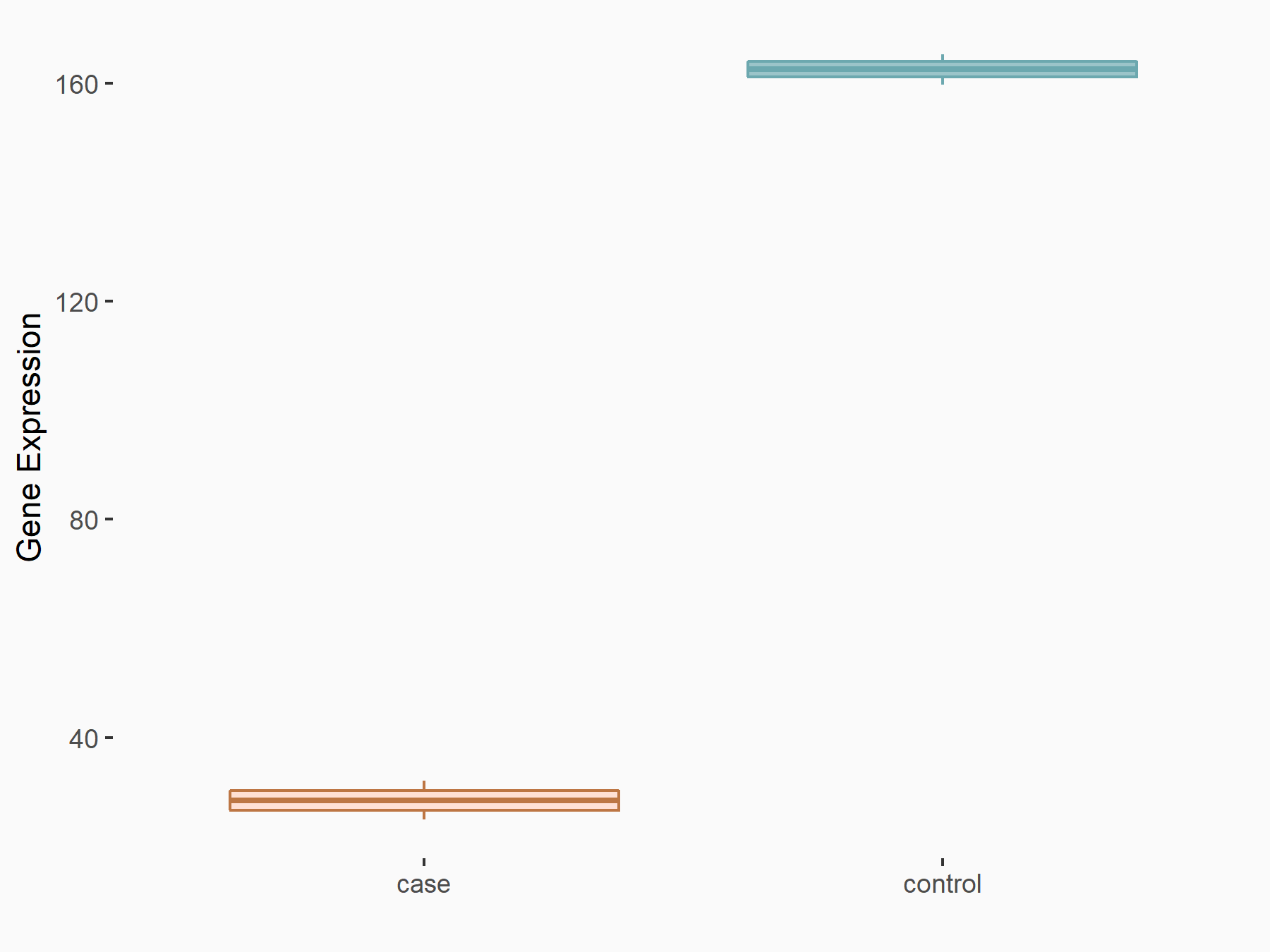m6A Target Gene Information
General Information of the m6A Target Gene (ID: M6ATAR00719)
Full List of m6A Methylation Regulator of This Target Gene and Corresponding Disease/Drug Response(s)
EEF1A2
can be regulated by the following regulator(s), and cause disease/drug response(s). You can browse detail information of regulator(s) or disease/drug response(s).
Browse Regulator
Browse Disease
Methyltransferase-like 14 (METTL14) [WRITER]
| Representative RNA-seq result indicating the expression of this target gene regulated by METTL14 | ||
| Cell Line | HepG2 cell line | Homo sapiens |
|
Treatment: shMETTL14 HepG2 cells
Control: shCtrl HepG2 cells
|
GSE121949 | |
| Regulation |
  |
logFC: -2.52E+00 p-value: 5.01E-13 |
| More Results | Click to View More RNA-seq Results | |
| In total 1 item(s) under this regulator | ||||
| Experiment 1 Reporting the m6A Methylation Regulator of This Target Gene | [1] | |||
| Response Summary | Silencing METTL14 repressed apoptosis of spinal cord neurons and attenuated spinal cord injury by inhibiting m6A modification of Elongation factor 1-alpha 2 (EEF1A2) and activating the Akt/mTOR pathway. | |||
| Target Regulation | Down regulation | |||
| Responsed Disease | Injuries of spine or trunk | ICD-11: ND51 | ||
| Pathway Response | PI3K-Akt signaling pathway | hsa04151 | ||
| mTOR signaling pathway | hsa04150 | |||
| Cell Process | Cell apoptosis | |||
| In-vitro Model | HEK293T | Normal | Homo sapiens | CVCL_0063 |
| In-vivo Model | Specifically, rats were anesthetized with an intraperitoneal injection of 4% pentobarbital sodium (35 mg/kg) after weight measurement. To expose the posterior vertebral arch from T8 to T12, an incision was subsequently made on the skin along the dorsomedial line to the aponeurosis and muscle plane. Laminectomy (3 mm) was performed from the caudal end of the T10 vertebra to the caudal end of the T11 vertebra under a dissection stereomicroscope. Infinite Horizons impactor (Infinite Horizons, L.L.C., Lexington, KY, USA) was utilized to induce contusion SCI at the force of 60 kdyn/cm . The incision was sutured, followed by intramuscular injection of 20000 units of penicillin once a day for three days. Incisions of rats in the sham group (N = 10) were sutured after skin incision without modeling surgery and related treatment. SCI rat model was established and SCI rats were assigned to the following groups (N = 10 per group): SCI group (SCI treatment), SCI + sh-NC group (injected with silencing negative control lentivirus after SCI treatment), SCI + sh-METTL14 + sh-EEF1A2 group (injected with silencing EEF1A2 and silencing METTL14 lentivirus after SCI treatment), SCI + oe-NC group (injected with overexpressed EEF1A2 NC lentivirus after SCI treatment), SCI + oe-EEF1A2 group (injected with overexpressed EEF1A2 lentivirus after SCI treatment), SCI + oe-EEF1A2 + H2O group [injected with overexpressed EEF1A2 lentivirus and treated with 50 mg/kg (i.p.) H2O after SCI treatment] and SCI + oe-EEF1A2 + Perifosine group [injected with overexpressed EEF1A2 lentivirus and treated with 50 mg/kg (i.p.) Perifosine after SCI treatment . Lentivirus treatment was conducted three days following laminectomy (on day 0, 1, and 2). sh-NC, sh-METTL14, sh-EEF1A2, oe-NC, and oe-EEF1A2 lentivirus (50 uL/day, 100 nmoL/mL; RiboBio, Guangzhou, China) were intrathecally injected through lumbar puncture for 15 min per day. | |||
Injuries of spine or trunk [ICD-11: ND51]
| In total 1 item(s) under this disease | ||||
| Experiment 1 Reporting the m6A-centered Disease Response | [1] | |||
| Response Summary | Silencing METTL14 repressed apoptosis of spinal cord neurons and attenuated spinal cord injury by inhibiting m6A modification of Elongation factor 1-alpha 2 (EEF1A2) and activating the Akt/mTOR pathway. | |||
| Responsed Disease | Injuries of spine or trunk [ICD-11: ND51] | |||
| Target Regulator | Methyltransferase-like 14 (METTL14) | WRITER | ||
| Target Regulation | Down regulation | |||
| Pathway Response | PI3K-Akt signaling pathway | hsa04151 | ||
| mTOR signaling pathway | hsa04150 | |||
| Cell Process | Cell apoptosis | |||
| In-vitro Model | HEK293T | Normal | Homo sapiens | CVCL_0063 |
| In-vivo Model | Specifically, rats were anesthetized with an intraperitoneal injection of 4% pentobarbital sodium (35 mg/kg) after weight measurement. To expose the posterior vertebral arch from T8 to T12, an incision was subsequently made on the skin along the dorsomedial line to the aponeurosis and muscle plane. Laminectomy (3 mm) was performed from the caudal end of the T10 vertebra to the caudal end of the T11 vertebra under a dissection stereomicroscope. Infinite Horizons impactor (Infinite Horizons, L.L.C., Lexington, KY, USA) was utilized to induce contusion SCI at the force of 60 kdyn/cm . The incision was sutured, followed by intramuscular injection of 20000 units of penicillin once a day for three days. Incisions of rats in the sham group (N = 10) were sutured after skin incision without modeling surgery and related treatment. SCI rat model was established and SCI rats were assigned to the following groups (N = 10 per group): SCI group (SCI treatment), SCI + sh-NC group (injected with silencing negative control lentivirus after SCI treatment), SCI + sh-METTL14 + sh-EEF1A2 group (injected with silencing EEF1A2 and silencing METTL14 lentivirus after SCI treatment), SCI + oe-NC group (injected with overexpressed EEF1A2 NC lentivirus after SCI treatment), SCI + oe-EEF1A2 group (injected with overexpressed EEF1A2 lentivirus after SCI treatment), SCI + oe-EEF1A2 + H2O group [injected with overexpressed EEF1A2 lentivirus and treated with 50 mg/kg (i.p.) H2O after SCI treatment] and SCI + oe-EEF1A2 + Perifosine group [injected with overexpressed EEF1A2 lentivirus and treated with 50 mg/kg (i.p.) Perifosine after SCI treatment . Lentivirus treatment was conducted three days following laminectomy (on day 0, 1, and 2). sh-NC, sh-METTL14, sh-EEF1A2, oe-NC, and oe-EEF1A2 lentivirus (50 uL/day, 100 nmoL/mL; RiboBio, Guangzhou, China) were intrathecally injected through lumbar puncture for 15 min per day. | |||